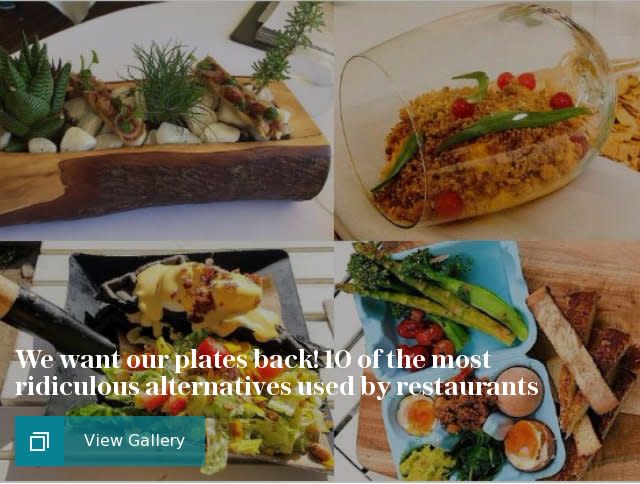Why 'homecooked' food is often anything but: the buzzwords restaurants use to trick you

From clichés to catchphrases, the buzzword is a restaurant staple.
Tonight, the new series of Channel 4's popular show Tricks of the Restaurant Trade will unpick the words used to entice us to order their food.
The series aims to lift the lid on the things consumers should be aware of when they eat out. Presenter Simon Rimmer is joined by Sophie Morgan, a lead presenter on Channel 4’s Rio Paralympics. Roving reporter Adam Pearson is returning and Seyi Rhodes, a reporter on Channel 4’s Unreported World, also joins the team.
According to Sophie Morgan, the language restaurants use - exotic, authentic, fresh tasting, handcrafted - is alluring. "But look beneath the surface, and the meaning may not be quite what it seems,” she warns.
Ahead of the first episode, here's three of the most common buzzwords to look out for:
1. Home-cooked
The word home cooked calls to mind family cooking, but according to the show's Associate Professor of Law Richard Hyde, it’s not so simple. The so-called "home-cooked" tortilla chips the team examine from a Latin American restaurant chain may not be cooked anywhere near a home, but in a restaurant kitchen using deep frying techniques.
Surprisingly, this is completely acceptable according to the Food Standards Agency. According to Hyde, provided you cook something in a way that you could do in your own home, you can call it home-cooked.
2. Handmade
This seems self-explanatory - but not when it comes to Pret a Manger’s "handmade" soup, which the show reveals is in fact made in a centralised factory.
“Handmade claims don’t actually refer to things necessarily being made by hand,” explains Hyde. You can use a blender or a chopping machine, provided it’s the sort that could be used on a domestic scale. “The line is not between use of hands and use of machines - it’s between industrial scale and not industrial scale,” he says.
According to Pret, the soup is indeed made in a factory. The wording was based on an old production process, and has now been updated.

3. Fresh
We all want our food to be as fresh as possible - but as the show reveals, the seemingly simple word "fresh" is often open to interpretation. Le Pain Quotidien claims to make “fresh” orange juice each morning, but although not concentrated, it is squeezed off the premises, and arrives already bottled. Fresh, Hyde says, has a “wide meaning.”
It doesn’t mean freshly squeezed - all it means is “not preserved in any unnatural way.” The real shocker? Their organic scrambled egg is in fact made of pasteurised liquid egg that has been made off site. Legally, that’s ok - when a menu says fresh, all it really means is that it's not preserved or frozen.
Café Rouge also uses “fresh” ingredients - even though their boeuf de bourguignon arrives boiled in a bag. Meanwhile, Pizza Express describe their dishes as fresh to order - but the dough is ready made, and the spinach is cooked from frozen. Provided that something is made "in response to an order", you can call something freshly prepared.
Simon Wilkinson, Managing Director, Café Rouge, said: “Our very popular Boeuf Bourguignon dish is made using the traditional French ‘sous vide’ method, which is commonplace in fine dining restaurants, both in the UK and France. The sous vide process, which is endorsed by many Michelin-starred chefs, is popular for its ability to consistently produce high quality and tender meat dishes that develop and retain deep, rich flavours.
“For the record we are happy to confirm that contrary to some misconceptions, our Boeuf Bourguignon dish is absolutely and categorically not made using a so-called ‘boil in the bag’ method, and any suggestion otherwise is completely false, and misrepresents the care, craft and authenticity behind this dish.
“We are also very happy to confirm that fresh food and ingredients are used in many of our dishes, and that Café Rouge applies various traditional French cooking methods in creating a range of high quality and authentic dishes for our customers.”

 Yahoo News
Yahoo News 
